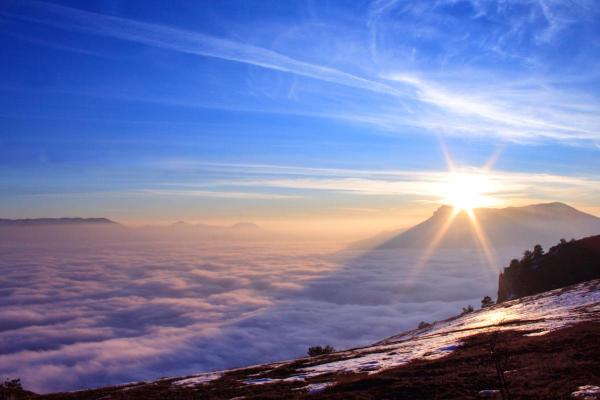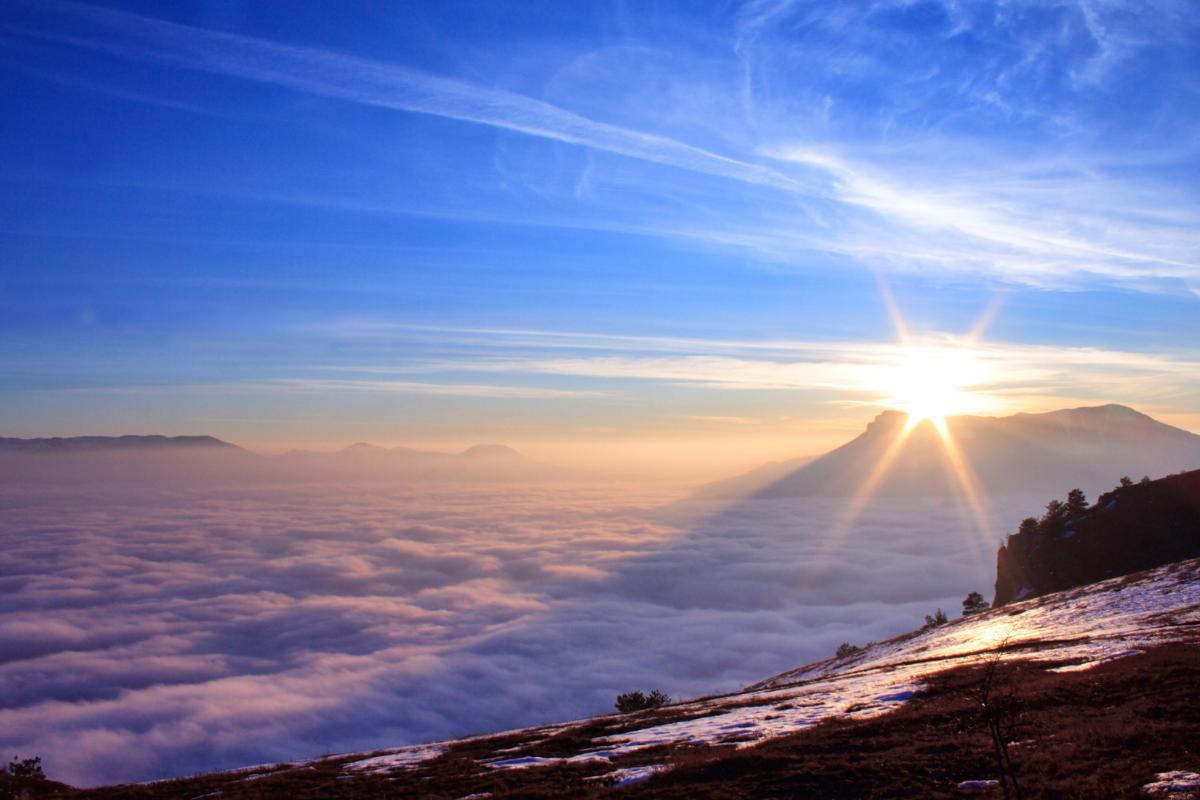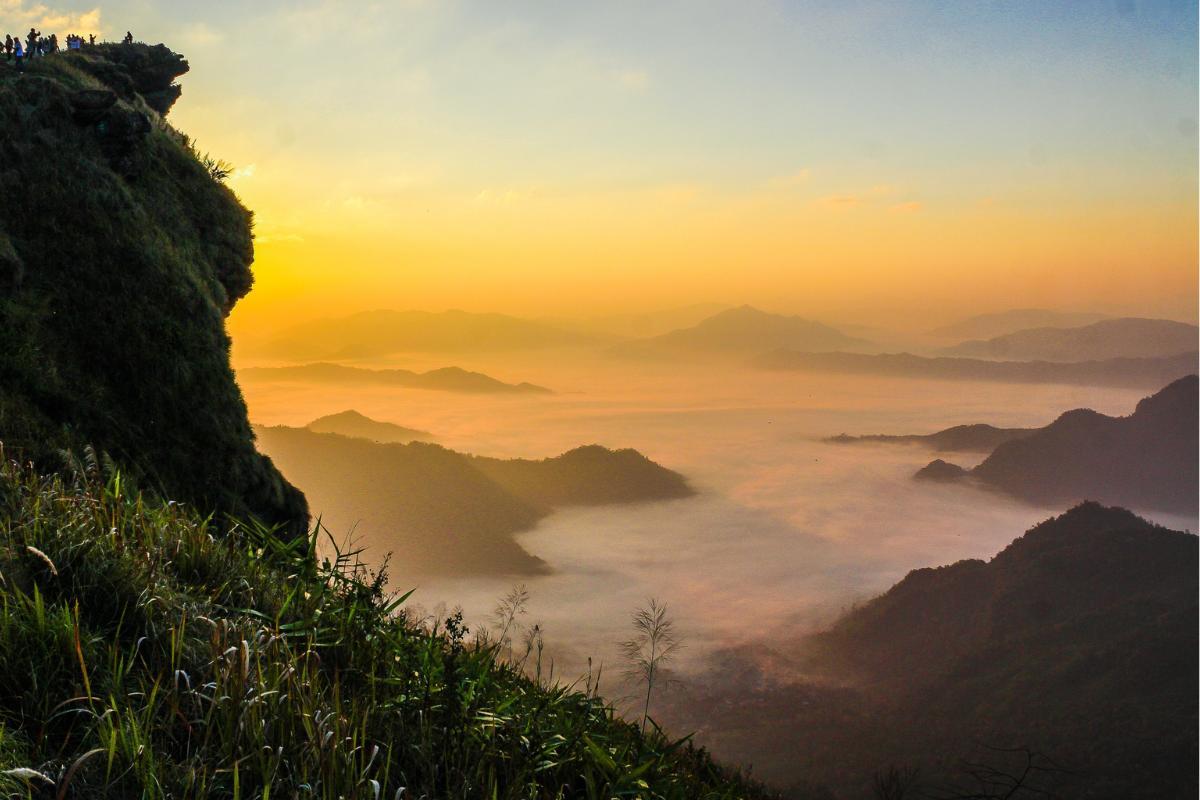What Is a Sea of Clouds and How Does It Form?


A sea of clouds is a meteorological phenomenon that occurs in various mountainous regions around the world. One famous example can be seen in Tenerife where visitors flock every year. This meteorological phenomenon occurs thanks to the confluence of trade winds, mountain ranges and occasional thermal inversions. This unique interaction between climatic and topographic factors creates a visual spectacle where clouds are trapped between the towering mountains to offer impressive panoramic views.
In this thedailyECO article, we ask what is a sea of clouds and how does it form? We also look at famous examples of seas of clouds across the world.
What is a sea of clouds?
The phenomenon known as sea of clouds occurs in various mountainous regions around the world. It is an atmospheric phenomenon that manifests when a layer of clouds forms and becomes trapped in valleys or mountain slopes. In doing so, it creates a visually impressive vista that appears as if it were the surface of a white and fluffy ocean.
The formation of the sea of clouds is closely linked to the topography of mountainous areas. It usually occurs when moist air from surrounding oceans or seas rises toward mountain peaks. As the air rises, it cools and saturates. This leads to the condensation of water vapor into small droplets that form clouds. When these clouds reach a certain altitude, they can become trapped between the mountains, covering the valleys and depressions as if they were an extensive sea.
Geographical setting plays a crucial role in creating the sea of clouds phenomenon. Mountains act as natural barriers, forcing humid air to rise and causing condensation that gives rise to clouds. Altitude and temperature are also determining factors, as they influence the air's ability to retain moisture.
The sea of clouds offers a unique visual spectacle, with the mountain peaks emerging like islands in the middle of this white ocean. When viewed from above from a higher mountain peak, it can provide and impressive and moving experience.
This phenomenon not only has aesthetic appeal, but also plays a vital role in local ecosystems. The humidity released by the clouds contributes to the hydration of the flora and fauna of the mountainous areas, generating an ecological balance that affects the biodiversity of the region.
It is also not the only meteorological phenomenon that occurs when clouds pass over mountains. You can learn about another with our article on what is the foehn effect?

How is a sea of clouds formed?
The formation of a sea of clouds involves a series of intricate meteorological processes. These are initially triggered by the interaction of factors such as topography, air humidity and atmospheric conditions. To better understand this phenomenon, it is essential to examine the key elements involved in its creation.
First of all, topography plays a crucial role. When a mass of humid air coming from oceans or seas encounters a mountain range in its path, it is forced to rise. As air rises up mountain slopes, it expands and cools due to a decrease in atmospheric pressure. This adiabatic process (i.e. where the heat is self-contained) causes the air to reach its saturation point where moisture condenses and forms water droplets, giving rise to clouds.
The altitude of the mountains also plays an important role. The higher the altitude, the faster the air will reach its saturation point. This means that higher mountains tend to generate seas of cloud more frequently and the phenomenon is more pronounced.
Atmospheric conditions are also important factors in the formation of the sea of clouds. The air temperature and the amount of humidity present are particularly influential. Clouds are more likely to form in climates where the air is laden with moisture, such as in regions near tropical oceans. Diurnal temperature variations can also play a role. Mountain slopes heat up during the day, generating air rises that contribute to cloud formation.
Once clouds form, the topography acts as a barrier that prevents the clouds from dissipating easily. The depressions between mountains function as basins where clouds can accumulate, creating the illusion of a sea spread over the mountain peaks.
The sea of clouds forms at the top of mountains, but you can discover all the parts of mountains in our related guide.
Examples of sea of clouds around the world
The sea of clouds phenomenon is not exclusive to a specific geographic region, but tends to occur in mountainous areas with particular characteristics. There are several regions across the globe known to be conducive to the formation of this natural spectacle. They include the following:
- Andes: the Andes mountain ranges in South America are famous for experiencing the sea of clouds. Countries such as Peru, Ecuador and Colombia are home to mountainous landscapes that create ideal conditions for this phenomenon, especially during times of year when humidity is high. Learn about the flora and fauna of the Andes in our related article.
- Himalayas: the majestic Himalayan mountain range spans several South Asian countries including India, Nepal and Bhutan. It is also prone to the formation of seas of clouds. High altitudes and steep topography contribute to this phenomenon.
- Rocky Mountains: in North America, the Rocky Mountains offer stunning landscapes where it is possible to witness seas of clouds. Climate variations and the combination of altitudes make some areas of this mountain range conducive to this phenomenon.
- Taiwan mountains: in East Asia, Taiwan's mountains include the Central Mountain Range and are known to experience this phenomenon. Moisture from the Pacific Ocean contributes to the formation of clouds that become trapped between the mountains.
- The Alps: in Europe, the Alps also offer spectacular sea of cloud settings. The high peaks and diverse topography of this mountain range give rise to conditions that favor the formation of this atmospheric phenomenon.
- Mountains of Africa: some mountainous areas of Africa, such as Mount Kilimanjaro in Tanzania, experience similar phenomena due to the combination of high altitudes and specific climatic conditions.

Sea of clouds in Tenerife
The sea of clouds in Tenerife, Spain is one of the most impressive examples of this phenomenon. Tenerife is the largest of the Canary Islands and its unique orography contributes to the regular formation of this phenomenon. The influence of the trade winds blowing from the northeast is one of the main reasons behind the sea of clouds in Tenerife. These winds transport moisture from the cold Atlantic Ocean to the warm, high mountains of the island.
Tenerife has notable mountain ranges, with the Teide National Park being one of the highest points. The high altitude of these mountains contributes to the formation of clouds when moist ocean air is forced up the slopes. Under certain conditions, a thermal inversion occurs in the atmosphere. This means that, instead of the temperature decreasing with altitude as it usually does, there is a layer of warm air that acts as a lid over the cloud layer, trapping it in valleys and mountain slopes.
Tenerife's sea of clouds is not only appreciated from a scientific point of view, but has also become a tourist attraction. Many visitors seek the unique experience of ascending to the peaks of Tenerife to contemplate this natural spectacle.
You can learn more about meteorological phenomena with our article on how do cumulonimbus clouds form?

If you want to read similar articles to What Is a Sea of Clouds and How Does It Form?, we recommend you visit our Meteorological phenomena category.







